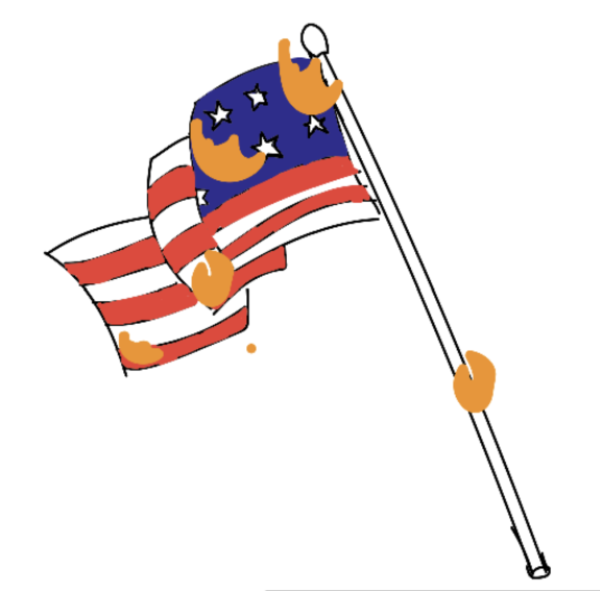International Women’s Day Around the World
International Women’s Day (IWD) is an annual event to celebrate women’s socioeconomic, political, and cultural achievements. Every year on March 8th activists spread awareness on gender discrimination and sexist stereotypes. IWD is important because of what it’s against. Oppressing women. The more gender equal a society is, the less women will be forced into marriage, more girls would have a chance at an education, and women could eventually be paid rightfully. Even though IWD is globally recognized, it’s celebrated differently in different countries, and it’s important to recognize how such a major event is portrayed around the world, as it shows how different cultures celebrate women and what women mean to them.
Starting off in South America, women in Bolivia are 28% less likely to have equal opportunities than men, according to the Gender Gap Index. Its government council is 53% female. But because of this increase in female representation, they experienced many negative reactions and backlashes. On March 8th, a common way to greet someone is with “¡Feliz Día de la Mujer!” which translates to “Happy Women’s Day!”. Bolivians also celebrate Bolivian Women’s day every year on October 11th. Which is done because of the birthday of Adela Zamudio, a national leader in the anti-gender discrimination movement.
Moving northwest, Panama scored a 0.74 in the gender gap index meaning that women there are 26% less likely to have equal opportunities than men. On March 8th 2019, there was a concert called “Divas del mundo” to thank women for fighting for their rights and independence. However, Panama has one of the least gender equal governments in Latin America, and elected only 16 female parliament members in 2019. Which is disappointing seeing that the population has been quite involved in and supportive of IWD celebrations.
If we continue north, we’ll get to the USA, where in terms of gender equality, the United States is ranked 30th by the World Economic Forum. IWD is celebrated every year and actually originates from North America, although the concept was first proposed and considered in Copenhagen by Luise Zietz and Clara Zetkin. On March 8th, women are often given flowers as presents, and protests for equal rights and fair pay sometimes occur.
Now let’s go southwest, across the North Pacific Ocean, and to Indonesia. Indonesia is part of CEDAW. Which is an international document where involved countries must eliminate all forms of discrimination against females and promotes equal rights for them. IWD is celebrated similarly to other countries, with things like political rallies and the celebration of women’s achievements. Indonesians also celebrate Kartini Day annually on April 21st to commemorate the life of Raden Adjeng Kartini, known for advocating for girl’s education and rights in the late 1800s.
Moving further south, we’ll get to Australia, where over the years, its ranking of gender equality has been decreasing. The gender pay gap is almost 14%, meaning that women on average earn $253 less than men. Thanks to UN Women Australia, IWD has been more recognized through their fundraising events, which aim to bring people from all backgrounds together to celebrate international achievements, advocate for change, and raise money to support the world’s women and girls.
Going west, across the Indian Ocean, there’s South Africa. About 80% of South African men and women believe that boys and girls have equal access to an education. However, poverty, poor education, and other aspects all play a role in preventing South African women from utilizing certain technologies as a tool for economic development. IWD isn’t recognized in South Africa as much as in other countries, however a more appreciated day is National Women’s Day on August 9th. The aim of it is to provide a chance to honor the generations of women whose hardships paved the way for the advances made in empowering women and promoting gender equality.
If we go almost 10,000 km north, we’ll arrive in Poland, which on the Gender Equality Index scored 56 points out of 100. In the last 12 years, its score has increased by only 0.9. Ironically, International Women’s Day is taken quite seriously in Poland. In the 70s, it was common for women to wear handmade tulip corsages. Nowadays, women make and are given IWD themed baked goods and flowers, as well as participating in protests for women’s rights.
As we can see, different countries celebrate International Women’s Day differently based on their culture or beliefs, and some prioritize another day to focus on just women from their country. It’s great to see that at ISL we are taught about women’s achievements in the science and math fields, and how women fought for their rights over the years. Nonetheless, it’s important to realize that the meaning of IWD is never less important than it was before, and it will continue to be celebrated for years to come.
Hey! I'm Emilia, I'm in year 12, and I joined The High two years ago. I love writing articles and short stories, as it gives me freedom to research and...




